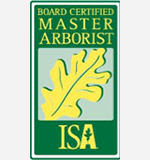Understanding Different Types of Lawn Damage
Keeping a lawn in great shape takes regular care and a good understanding of what can go wrong. Even with consistent mowing and watering, your yard can show signs of wear that hint at deeper issues. Brown patches, thinning grass, or spongy spots underfoot are just a few of the things homeowners might notice. These aren’t just surface-level problems. They can impact your lawn’s long-term health and appearance.
Understanding the different types of lawn damage is a great place to start if you’re aiming to improve the look and strength of your grass. With the right information, you can figure out what’s causing the trouble and take the steps needed to fix it. Whether the damage is from foot traffic, weather conditions, or something happening below the surface, identifying it early can help you maintain quality lawncare and landscaping that lasts through every season.
Common Types of Lawn Damage
Lawn damage comes in a variety of forms. Each type has its own cause and signs to look out for. Getting to know what these look like can help you prevent small problems from becoming big ones. Here are the primary categories of lawn damage:
1. Physical Damage
This is one of the most common forms of damage and often the easiest to spot. It develops from things like constant walking paths across the yard, kids playing in the same area day after day, or even heavy equipment or furniture sitting too long on the grass. All of this puts pressure on the soil and wears down the grass blades over time. High-traffic areas tend to look thin or bare and might feel compacted or hard when you walk on them.
2. Biological Damage
Biological issues usually come from living organisms like insects or diseases that affect the health of your grass. Grubs below the surface, for example, chew on roots and leave patches of dead grass above. Fungal issues can cause strange patterns or discolored rings that spread across your yard. You might also notice parts of your lawn that stay wet even when the rest is dry, which could signal problems with the root system due to decay.
3. Environmental Damage
This type of damage relates to what’s going on with the weather and how the soil reacts to it. Extended dry spells can lead to wilting and browning. On the other hand, too much moisture can cause waterlogging and root troubles. Lawns in shady areas may also suffer from poor sunlight exposure and reduced airflow, which slows growth and invites disease. Sudden temperature swings can also shock your lawn, especially during seasonal transitions.
We once helped a homeowner who was sure their lawn just needed more water. What they didn’t realize was that a heavily used path from the back door to their driveway had compacted the soil so much that water couldn’t soak in properly. The grass was thinning out, and no amount of irrigation helped until the soil was loosened and the area was reseeded.
When you’re able to spot these signs and match them with a potential cause, it becomes a lot easier to handle the issue and stop it from spreading. Thinking through where the damage might be coming from is the first step toward bringing your lawn back to full health.
Identifying Lawn Damage Early
Spotting lawn damage before it spreads across your yard is the best way to save time, effort, and money. The sooner you recognize the signs, the easier it is to keep your grass healthy. Each type of damage looks a little different, so it’s smart to regularly check your lawn’s overall condition.
Here are a few things to watch for:
– Browning or thinning patches, especially in areas people frequently walk through
– Odd shapes like circles or streaks showing up in the grass
– Mushy or overly dry spots, even when nearby areas look fine
– Grass that pulls up easily, which could point to weakened or damaged roots
– Sections that don’t bounce back after pressure or look sunken
To get a better look at what’s going on beneath the surface, use a small garden spade or soil probe to check root strength and soil condition. If the dirt feels rock-hard or the roots look dark and weak, it might be a sign of compaction or poor drainage. These small checks make it easier to figure out what needs attention before things get worse.
Lawn Damage Prevention Methods
The condition of your grass depends a lot on the habits you follow year-round. Just avoiding stress and practicing good daily care goes a long way. Try to mix up walking routes across your lawn so no one path gets worn out. If you use outdoor furniture or sports equipment, rotate it every so often to give the grass time to recover underneath.
Here are a few solid ways to prevent damage before it gets out of hand:
– Mow regularly, but never too short. Cutting more than one-third of the grass height all at once can weaken it
– Water deeply and early in the morning to keep moisture from sitting on the blades overnight
– Avoid walking on wet lawns, especially after heavy rains
– Keep your mower blades sharp to avoid tearing the grass
– Schedule seasonal cleanup to remove debris, excess thatch, or fallen leaves before they smother the grass
Portions of your yard that get heavy use, like play areas or walkways, might benefit from reinforcement. This can be done by installing stepping stones or redirecting foot traffic altogether. Over time, these small choices help reduce the chances of damage from happening in the first place.
How to Repair Lawn Damage
When damage has already set in, don’t panic. Many issues can be fixed if you act quickly and match your solution to the type of problem you’re facing. The fix often depends on whether the roots, soil, or surface blades are affected.
Here’s a basic breakdown of repair approaches:
– Light wear: Rake the area to loosen the soil, then reseed and water daily until new grass appears
– Worn paths: Aerate compacted soil, add a layer of loose topsoil, and reseed or lay new sod
– Root trouble: If large areas pull up easily, the roots might be eaten away. This might need deeper work like replacing the affected turf and improving drainage
– Mold or fungus rings: Remove the dead matter, rake through the soil to improve airflow, and avoid overwatering
In one case, a customer had a dog that always ran the same path along the fence. The grass couldn’t keep up and the path turned to dirt. We worked with them to reseed the area and install a few flat stones to make that route more foot-traffic resistant. Sometimes it takes a mix of creativity and maintenance to keep high-use spaces looking good.
Keep Your Lawn Looking Its Best
Each lawn is different, but most damage comes from a few common causes. When you get into the habit of checking your yard, knowing what to watch for, and fixing things early, you put your lawn in a better position to recover and grow. A good maintenance routine is much easier to manage than dealing with extreme damage down the road.
With a bit of care and ongoing attention, your lawn can stay green, strong, and inviting all year long. Whether you’re dealing with wear and tear, soggy patches, or bare spots, there are solid ways to bring your grass back to life. Keep walking your yard, paying attention to signs of change, and don’t be afraid to get support when needed. Good lawncare doesn’t require guesswork. It just starts with knowing what to look for.
For those looking to improve the health and appearance of their yard, quality lawncare and landscaping can make a lasting difference. Ryan Lawn & Tree is here to help you maintain a beautiful, durable lawn with expert care tailored to your property’s unique needs. Whether it’s routine upkeep or targeted solutions, their team is ready to bring out the best in your outdoor space.









